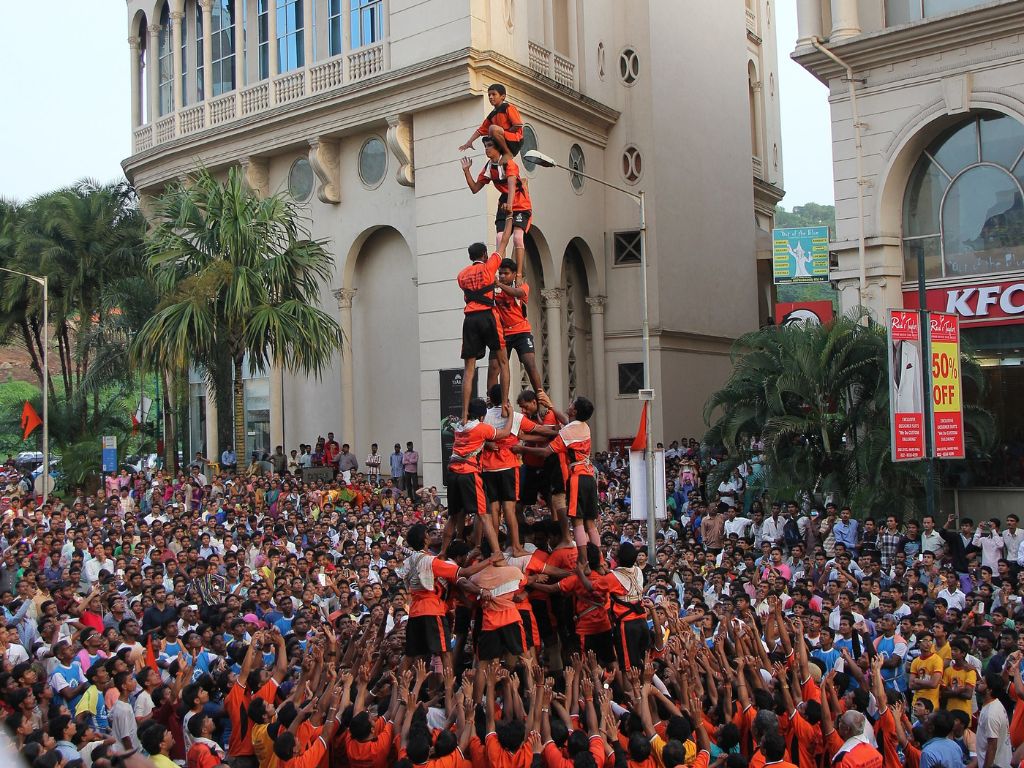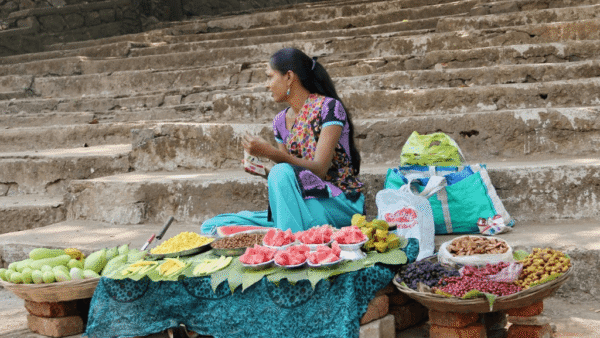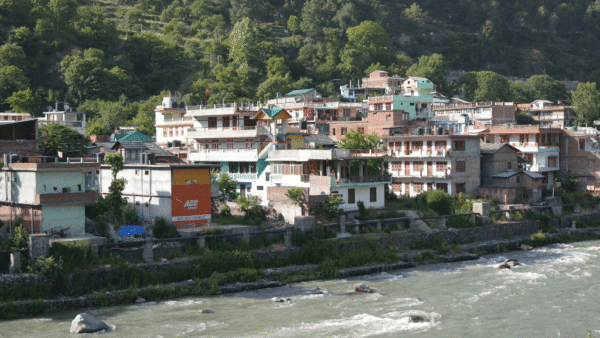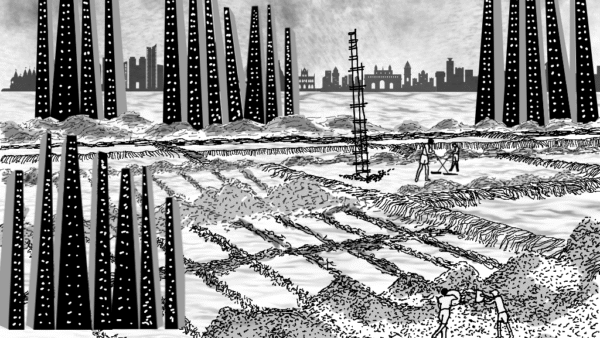The festive spirit is in the air in India, besides, of course the noxious fumes and noise. Whether regional festivals, community celebrations, or pan-Indian festivals like Diwali, people and places are abuzz with more activities, homes and streets are lit up, shops and markets offer a dazzling smorgasbord of things to buy, there’s altogether a different feel to public places in our cities. Indeed, the relationship between festivals and public places is varied, dynamic and complex; it has not quite received the academic attention as other aspects of urbanisation. Festivals – whether secular or religious, regional or national – would not be the same without being hosted in public places.
Festivals are not mere or solitary events. They repeat themselves year after year, celebrate or commemorate a historical event, a mythological story, a secular idea or perspectives in ways that are open to the public, and thereby help deepen the identity of the place or people. Festivals “create a sense of belonging and pride” among those who partake in them, say researchers[1], build community bonds on the basis of shared celebrations while also fostering local markets.
Festivals in India are traditionally around events or days of religious significance or celebrating harvests and seasons and so on. In cities, these festivals take new forms; cities host new festivals too of the non-religious or non-denominational kin such as the Mumbai Urban Arts Festival which sought to interpret and share perspectives about space, water and communities; cultural festivals which bring an assortment of events, practitioners and performances to venues around the city; art and literature festivals that have now become marquee events in the annual calendar.
There is another side, an underside as it were, too. The upsurge in people’s activities results in higher volumes of traffic on the streets, unimaginably dense crowds in markets, roads blocked off for a few hours or days lead to more traffic congestion, open spaces in neighbourhoods are taken over for the celebration denying others access, and in festivals like Diwali, heightened levels of air and noise pollution caused by indiscriminate use of firecrackers.

Photo: Pritiwary
The region-specific festivals have their own drawbacks too – the kanwar yatra in the northern states has led to strife between kanwariyas and local residents, besides the stench of open defecation and tonnes of garbage along the route[2] while the Dahi Handi festival routinely sees strapping young men become paralysed for life[3] and hundreds of others sustaining injuries.[4] The Jallikattu in Tamil Nadu sees deaths and injuries too.[5]
Festivals in cities are double-edged – there’s an upsurge in economic activity and positive or festive sentiment but there are also grave concerns of pollution and use of public space.
Space as much as celebration
The role of festivals in shaping and reshaping city space, in the words of researcher-author Dr Marjana Johansson, “is inseparable from the economic and social structures, and practices which govern urban life.” In her chapter in the edited volume The Cambridge Companion to International Theatre Festivals, Dr Johansson notes that there has been an increased interest in festivals among decision-makers and marketers “as vehicles for cultural profiling, regeneration, and social inclusion…(the) political aspect of city festivals is being mobilised for economic, social, and cultural purposes.”
The creation and use of festival space, how the space becomes accessible or not to different people, and how spaces in a city acquire new meanings – or threats to some – all draw on the concept of production of space articulated by noted French sociologist Henri Lefebvre. In doing so, the festivals “become implied in the (re)configurations of social patterns of representation and marginalisation” reflecting the inclusion or exclusion in a city, writes Dr Johansson.
Mumbai’s iconic Juhu beach, for example, is many things to many people encompassing leisure and reflection, entertainment and exercise, family get-together space, open stretch in a dense city. It turned into a site of contested regional identity when the growing number of Bihari migrants in Mumbai began to fill it en masse to celebrate Chhath Puja about 20 years ago. The roads to the Juhu beach were barely accessible to residents that day, the beach could not be used for other purposes given the surging crowds worshipping the sun, in thanksgiving, as it went down.
For one day in a year, Biharis could claim a large public place as their own – important in a city in which sons-of-the-soil nativist political leaders derided them and their identity, mocked them as ‘outsiders’. However, it also meant that one of the city’s largest accessible open spaces was not available to others that day and the next when the waste was being cleaned up, leading to regular users of the beachfront, such as joggers and runners, feeling some antipathy.
The kanwar yatra regularly blocks roads in New Delhi as the kanwars or pilgrims enter the city or use its borders with neighbouring states, which is often interpreted as encroaching upon others’ right to move freely on the roads. “Due to the movement of the pilgrims and camps set up by them, traffic congestion and obstruction are expected at several places including Rani Jhansi Road, Baraf Khana Chowk, Fire Station, Boulevard Road, Azad Market Chowk, Gokalpuri flyover, 66 Foota Road among others,” cited this news report in July.[6]
Few cities in India have planned and built spaces to hold large numbers of people for a festival; also, many community or religious festivals are celebrated in several small gatherings rather than one large congregation. Mumbai’s Dahi Handi is an example. Several of them are staged across the city on Janmashtami with many roads cordoned off till the ‘Govindas’, or young men and boys, forming the pyramid to break the pot have done so. What it does in a city (in)famous for its traffic jams is anybody’s guess but it cannot be that the ‘Govindas’ have no right to road space in the city.
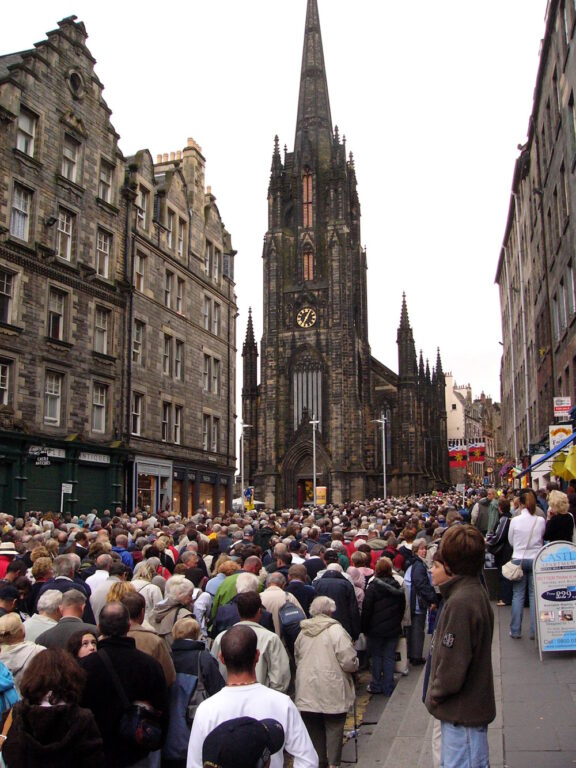
Photo: Creative Commons
The contestations of public places in cities seem to become sharper, more challenged, during festivals. Across Indian cities, parks and open spaces are routinely claimed by festival organisers for pandals and tents, while festival-goers also develop a relationship with the space invoking[7], “emotional and symbolic significance”. For this reason, festivals have come to be a strategy used to re-position or re-generate certain public places and areas in a city.
‘Festivalisation’ and its fallouts
If cities are about commerce and economy, then festivals heighten this aspect. In fact, there’s now a distinct ‘festivalisation’ in cities as festival-specific goods are rolled out in the market, customers make big-ticket purchases especially of white goods or property, the demand for new clothes and gifting opportunities peak, mega projects are launched and small vendors too sell their wares in the traditional markets.
An uptick in economic activity means good days for manufacturers, dealers, and retailers but it also sharpens the inequality of income and wealth in cities. There would be no deeper cut to feel how impoverished one is or to see the longing in the eyes of one’s children than to watch the ‘haves’ in your city spend lavishly during festivals. Seen this way, festivals, though an economic characteristic of a city, become a part of the urban cultural economy in which there exists a clear and almost impenetrable line between the privileged and the rest.
“It is no longer possible to say that festivity is a simple rupture in the mundanity of everyday life of urban citizens; rather, contemporary cultural festivals now often exhibit complex and uneasy tensions between the socio-economic strategies of commercialised neoliberal cities and the cultural needs of diverse communities to gather and celebrate…cultural festivals and cities have an ongoing relationship, which is now mainly commercialised and politicised, and this has diverse impacts on communities, urban spaces and cultural identities,” found Professor Rebecca Finkel, professor of Critical Event Studies in Queen Margaret University, Edinburgh.[8]
There is, indeed, a cultural economy at play here. There are, as scholars have identified, enduring aspects of this such as museums, art galleries, libraries, theatres and so on which lend a city its rarefied air of intellectual inquiry, artistic pursuits, refinement and urbane chic. Then, there are festivals which bring in new energy and shape the identity of a city, festivals crafted around cultural touchpoints such as art, literature, music, theatre and so on which are more secular than traditional festivals and allow people of a city to bond with fellow citizens over and beyond their religious or community or regional identities. There is undeniably a commercial underscore to it all.
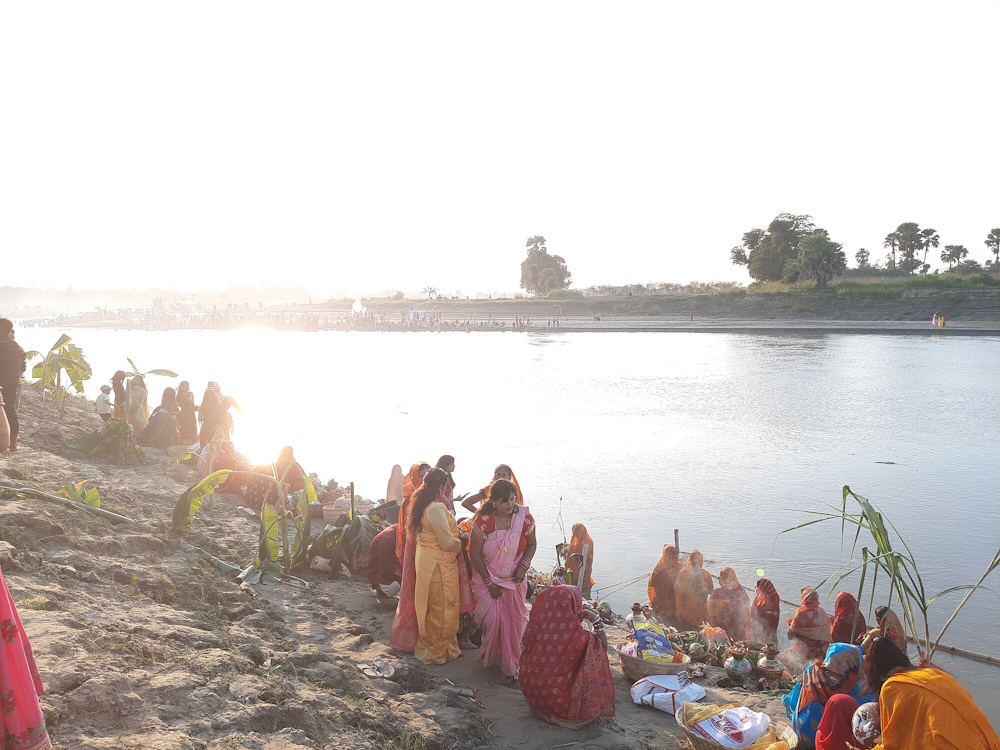
Photo: Creative Commons
“…The growth trajectory of the cultural economy, the insertion of creative industries within the contested spaces of the inner city, and the rise of a putative creative class concentrated within gentrifying neighbourhoods have stimulated new scholarly discourses and debates, as well as media attention and a prominent place for contemporary culture and its signifiers within the public imagination,” remarked Thomas Hutton, professor of Urban Studies and City Planning at the University of British Columbia, tracing the cultural production in cities and its effect.[9]
On another note, festivals in India have also come to mean an increase – alarming one – in air and noise pollution as well as severe challenges in waste management which, even on non-festival days, falls woefully short of the capacity of urban governance bodies. Over the past few years, the air in India’s cities has consistently turned severely hazardous to life during Diwali as firecrackers are burned with total disregard to the prevailing environmental condition. Any curb is seen as an attack on religious or cultural traditions of celebrating that festival – unfairly so.
This aspect calls for urgent regulation given the Climate Change challenge in cities where the incidences of extreme high temperatures, Heat Island effect, unseasonal rain, flash floods after sudden and intense rainfall have become more common than at any time in the past. Air pollution and climate effects have an established connection where changing weather patterns and sea breeze have affected the quality of air in a city; making it worse with indiscriminate use of firecrackers or unregulated industrial and traffic emissions serves no purpose at all.
Going forward, it will become important for cities to work out how to have people celebrate in a sustainable manner, without intensifying the climate impacts.
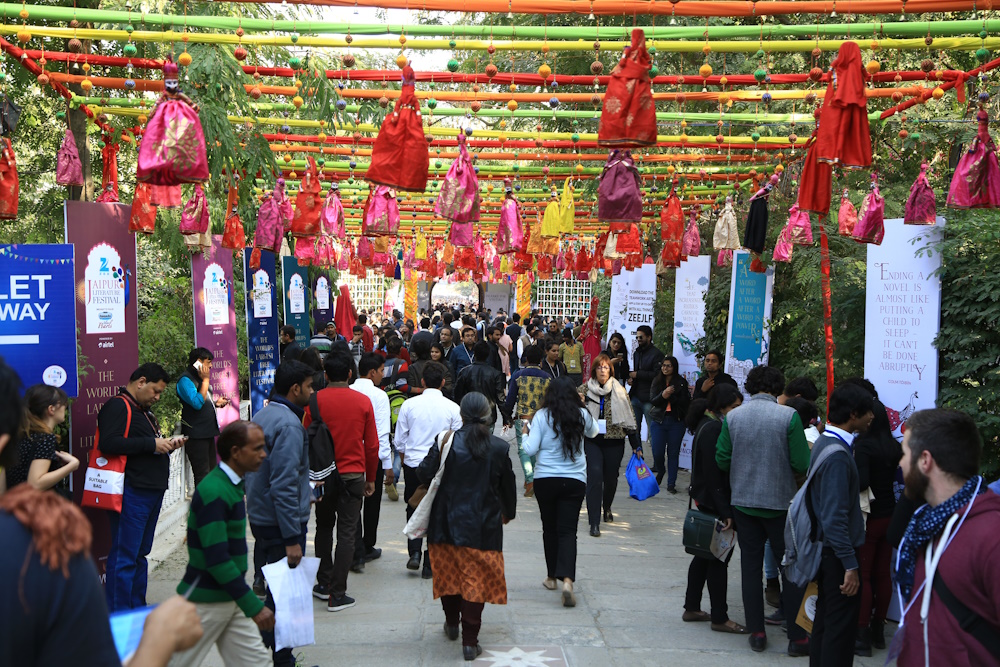
Photo: British High Commission, Delhi/ Flickr
Festival cities, urban regeneration
Then, there’s the concept of festival cities or cities that have come to be identified in the popular, even worldwide, imagination with cultural festivals. Among them are The Carnival in Brazil’s Rio de Janeiro, Mardi Gras, La Tomatina in Buñol, Oktoberfest in Germany’s Munich, Cannes for the top-billed film festival. There are music festivals including the EDM (electronic dance music fests) in Ibiza, Madrid, Glasgow, Mexico City, Tokyo. Edinburgh in Scotland claims to be the world’s leading festival city. There are also festival cities that are periodically set up and then folded up such as the smaller cities hosting the Kumbh Mela in India.
The ‘festivalisation’ of culture in cities goes back to the 1930s, at least in Europe, and festivals have been used as tools of urban planning or policy even as they respond to the political, economic, and spatial layout of the urban environment, says researchers John R. Gold and Margaret M. Gold in their book Festival Cities: Culture, Planning and Urban Life published in 2020. Though centred on European cities, their findings resonate across continents too. “The festival is an infinitely malleable form of cultural gathering making it the Swiss Army Knife of cultural policy,” which, to an extent, explains its widespread use in planning and policy, they remarked.

Photo: Creative Commons
There is an urban planning or regeneration aspect to festivals which some cities have been able to capture by ‘owning’ certain festivals, co-branding them with the cities. But which parts of a city or what aspects are promoted become important too. It is not merely that the city, or an area, is the stage for a festival but also what the festival leaves behind in upscaling infrastructure or regenerating value. Does a festival bring more footfalls and help the local economy? Can the festival’s revenue, at least a part of it, be reinvested into upgrading amenities in that precinct? Who gets to decide, and how, about which festivals are best suited to a city or an area in a city?
Without a conscious and sensitive policy that addresses these and other aspects, a festival can end up straining urban resources, making locals feel that their home turf has been intruded upon for profit. For festivals to become urban planning or policy tools, there has to be a considered vision of how festivals can be integrated into a city’s ethos and which audiences can be attracted. John and Margaret Gold make the distinction between ‘business’ and ‘audience’ festivals but this may be a difficult distinction to make; most festivals tend to be a mix of both.
Ultimately, the link between festivals and geography or space remains an important one. “Festivals and urban regeneration are linked, both in obvious, material ways (new venues and physical facilities have been developed to stage festivals) but also more subtly…festivals can be used as catalysts for a softer, more people-oriented approach. As criticisms of top-down physical regeneration intensify because of related gentrification and reliance on trickle down effects, socio-economic development is arguably the most important and most justifiable form of urban change – particularly when it builds on what already exists. This highlights the potential of festivals to be catalysts for, or agents of urban regeneration,” explain Andrew Smith, Guy Osborn and Bernadette Quinn in their book Festivals and the City: The Contested Geographies of Urban Events.
Clearly, in the urban context, festivals are more than just celebrations.
Cover photo: Dahi Handi festival in Mumbai/ Creative Commons

